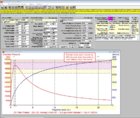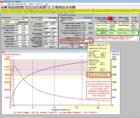Many years ago I was browsing a Usenet forum (before web-browsers for the younger crowd) where someone mentioned that benchrest competitors could work up a load for a rifle in 30 rounds. I'd just finished putting 90 rounds through a 7mm Mag testing variations of powder, bullets, and primers. I grew up reloading and being a whiz at multiplication since the 9th grade, I knew that 6 powders times 5 bullets times 5 charge weights times 3 shot groups as listed in every manual on my shelf was a lot more than 30 rounds. I had to learn the secret.
First, us BR guys really can work up a load in 30 rounds, but we've already picked the bullet, primer, 1 or 2 powders, and a likely seating depth all for a rifle that we worked up a load for last week too. We tune (re-tune) for every weekend match, and we tune continuously between targets throughout the day. The keys are good components and equipment, and knowing what to watch for.
Assuming that you have a well-prepped rifle and optics, and an appropriate bullet for the barrel twist and intended target, tuning typically comes down to which powder, charge weight, and seating depth.
Powder: Cartridge efficiency is one of the cornerstones of BR accuracy. The most efficient loads are ones where the powder fills the case (95+% full) and burns are the rate where the powder is close to 99+% consumed when the bullet reaches the muzzle. The Berger Reloading Manual is one of very few that lists the fill ratio, but my go-to source for load development is the Quickload software program. At $150, it is about the same price as any three manuals from the big-box suppliers, and an infinitely better source of information.
One of the most useful functions of Quickload is to generate a table of loads that will meet some criteria... I queried it for all the charges that produced a maximum of 45000 psi peak pressure, and filled the case up to 104% of the case capacity (usually a slightly compressed load). It sorts the results by velocity...
Cartridge : .221 Rem Fireball
Bullet : .224, 50, Hornady V-MAX BT 22261
Useable Case Capaci: 18.395 grain H2O = 1.194 cm³
Cartridge O.A.L. L6: 1.830 inch = 46.48 mm
Barrel Length : 24.0 inch = 609.6 mm
Predicted Data for Indicated Charges of the Following Powders.
Matching Maximum Pressure: 45000 psi, or 310 MPa
or a maximum loading ratio or filling of 104 %
C A U T I O N : any load listed can result in a powder charge that falls below minimum suggested
loads or exceeds maximum suggested loads as presented in current handloading manuals. Understand
that all of the listed powders can be unsuitable for the given combination of cartridge, bullet
and gun. Actual load order can vary, depending upon lot-to-lot powder and component variations.
USE ONLY FOR COMPARISON !
29 loads produced a Loading Ratio below user-defined minimum of 93%. These powders have been skipped.
Powder type Filling/Loading Ratio Charge Charge Vel. Prop.Burnt P max P muzz B_Time
% Grains Gramm fps % psi psi ms
--------------------------------- -----------------------------------------------------------------
Nitrochemie A/S 0300 103.4 18.0 1.17 3055 95.5 45000 5094 1.027 ! Near Maximum !
ADI AR 2207 103.6 16.4 1.06 3023 99.1 45000 4707 1.035 ! Near Maximum !
ReloadSwiss RS 30 97.6 14.6 0.94 2991 100.0 45000 4152 1.031 ! Near Maximum !
Vihtavuori N125 *C 99.5 15.7 1.02 2967 99.6 45000 4361 1.045 ! Near Maximum !
ReloadSwiss RS 36 96.0 15.8 1.03 2955 97.9 45000 4481 1.046 ! Near Maximum !
ADI AR 2219 104.0 18.2 1.18 2953 90.3 43864 4858 1.049 ! Near Maximum !
Alliant Reloder-7 101.5 16.6 1.08 2953 96.2 45000 4599 1.056 ! Near Maximum !
Norma 200 *C 104.0 17.3 1.12 2952 95.8 41681 4826 1.090 ! Near Maximum !
SF033 fl, russ. 5,45x39 104.0 18.0 1.17 2949 97.0 38525 4923 1.094
PB Clermont PCL 508 *C (PCL223) 104.0 18.9 1.22 2946 88.9 43364 4878 1.058 ! Near Maximum !
SNPE Vectan SP 10 104.0 18.8 1.22 2945 88.9 43261 4882 1.059 ! Near Maximum !
Hodgdon H4227 96.4 15.0 0.97 2942 98.7 45000 4334 1.040 ! Near Maximum !
Vihtavuori N120 *C 104.0 16.1 1.04 2929 99.4 42315 4340 1.065 ! Near Maximum !
Hodgdon H335 104.0 19.2 1.25 2929 88.4 43221 4863 1.060 ! Near Maximum !
.
.
. [There are several more suitable choices listed...]
.
For bolt action rifles, I try to target a charge weight the puts the peak pressure about 5% below maximum.This gives a little headroom for increased pressure from seating bullet into the lands. Once the charge weight is in the right range, very small adjustments (say .1 gr on a Fireball case, .3 on a -06 case) can be all that is need to tune out some vertical.
Seating Depth: A lot of reloaders will describe their seating depth as just jumping or jammed, but there is actually huge opportunity for tuning in the seating depth. For a non-VLD bullet, there is typically about .030" of seating depth variation from where the bullet is "hard-jammed" (pushed into the case by the rifling) back to the "touch" where a bullet is just barely contacting the rifling. Old timers would try to gauge this by examining the rifling marks left on the bullets. A better method is to make a dummy round seating the bullet too long and let the rifling shove the bullet back in the case. Then measure the cartridge length to the bullet ogive as baseline for setting up your seating die.
There are two areas in seating depth to avoid: stay away from the pure hard-jam (not every bullet will engrave the same way so you'll get a lot of variation), and similarly that length about .030" off the hard jam for most bullets will result in some bullets touching while others don't. The minor variations from one bullet to the next will wreck your consistency.
How much difference can seating depth make? A lot!
Seating a bullet to touch the lands significantly increases the amount of pressure that builds in the case before the bullet starts to move. This is known as the Shot Start (Initiation) Pressure. When off the lands, an accepted value is around 3625 psi. Touching the lands can increase that value to over 10,000 psi. This can be equivalent to 1-3 grains more powder!
As an example, here is some research on the OP's 221 Fireball. I assumed a 50gr VMax, standard pressures, and a 24" barrel for this. Below are a couple charts from Quickload that show the difference in peak pressure just from changing seating depth.
*Note*: I don't own a Fireball, so these are just guesses, but in the first chart, I'd consider Rel7 to be a bit too slow... I'd like to see the powder 95% consumed at halfway down the barrel, not 20". In the second chart, jamming the bullet jumps the peak pressure which also results in an increased burn rate, making the powder seem a better choice.
My own experiments have shown that there is some variability in the Start Pressure depending on neck tension, bullet design, and how hard into the lands the bullet is jammed.
Bullet Off The Lands

Same Load, Bullet Touching The Lands
















